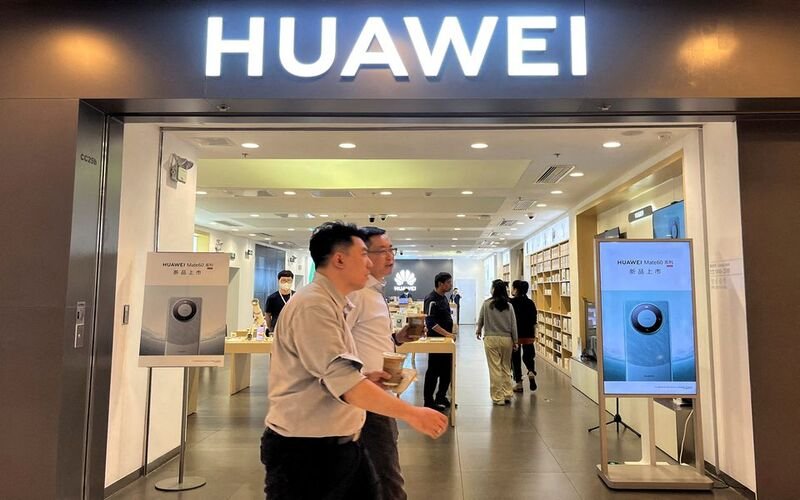With reports indicating that it secured a sizable A.I. chip order from Chinese tech giant Baidu (9888. H.K.) this year, Huawei is poised to gain market share as a result of U.S. restrictions on Nvidia’s (NVDA.O.) shipments of sophisticated artificial processors to China.
Huawei, which is more well-known worldwide for its telecom and smartphone industries, has been developing an A.I. chip line for the past four years.
Here is what is known about its Ascend A.I. chip series and the 910B, its primary offering and a competitor to Nvidia’s A100 processor.
HOW AND WHY DID HUAWEI GO AFTER THE AI CHIP MARKET?
As part of a plan to develop a full-stack A.I. portfolio and become a computational power supplier, Huawei initially announced the Ascend 910 in 2018 and formally introduced the chip in 2019. The corporation was the subject of U.S. export restrictions that same year.
Huawei said at the time that their CPU was the most potent A.I. processor in the world, and reports from Chinese media suggested that the first Ascend 910 was produced using 7-nanometer technology.
According to Huawei, the processor can do half-precision floating point (FP16) operations at 256 TeraFLOPS and integer precision computations at 512 TeraOPS (INT8). The chip’s efficiency was another point of pride for the manufacturer, who claimed that its maximum power consumption of 310W beat Huawei’s initial objective of 350W.
However, the chip could not challenge Nvidia’s hegemony in and out of China. With the release of its A100 and H100 processors in 2020 and 2022, respectively, Nvidia captured the lion’s share of the worldwide A.I. chip market—the rise of generative A. I further accelerated this trend.
Nvidia has a significant incumbent advantage against Huawei, according to experts, with one considerable benefit being the dependency of ongoing AI initiatives on Nvidia’s software ecosystem. Analysts claim that although Huawei has its own version of the ecosystem, known as CANN, its capacity to train AI models is far more constrained.
WHAT IS THE 910B, THE LATEST CHIP?
While the Ascend 910B, a revised version of the 910, has not yet been formally disclosed by Huawei, some information about the chip has leaked through academic and corporate commentary from China and technical manuals on the company’s website.
In August, Liu Qingfeng, the head of the massive Chinese A.I. company iFlyTek (002230. S.Z.), commended Huawei for creating a GPU that he said was “basically the same as Nvidia’s A100” and revealed that iFlyTek and Huawei were collaborating on a hardware development project.
The Ascend 910B, which was previously unknown, then became known thanks to the Chinese media website Yicai.
Additionally, Reuters discovered that starting in August of this year, Ascend 910B-related materials, including firmware and driver update guidelines, began to surface on Huawei’s website.
Senior Vice President Jiang Tao reiterated last month during iFlyTek’s earnings conference that the Ascend 910B’s capabilities were “comparable to Nvidia’s A100”.
One source told Reuters that Baidu placed an August purchase for 200 servers, totaling 1,600 Huawei 910B CPUs.
Analysts and sources claim that while the 910B processors’ raw processing capability is on par with Nvidia’s, their performance is still inferior. They are nonetheless regarded as the most advanced indigenous choice offered in China.
WHY IS THIS IMPORTANT FOR CHINA AND HUAWEI?
Analysts peg the value of the Chinese A.I. chip industry at $7 billion, and Huawei may have defeated the U.S. if it were to overtake Nvidia in the market share stakes.
Huawei has reaffirmed its goal to become a significant supplier of A.I. processing power. In September, Chief Financial Officer Meng Wanzhou stated that the company aimed to establish a computing base for China and provide a “second option” to the rest of the world, a subtly allusive reference to the dominant supplier, the United States.
China’s A.I. companies will have to rely on homegrown products without Nvidia chips, such as Huawei’s less potent chips. Still, experts predict that Huawei will eventually catch up, given the amount of funding and support the Chinese government provides for A.I. and semiconductors.




































Comment Template